


Nazarbayev University (NU) is the research university in Kazakhstan and is seen as a major platform for educational and research reform in the country. NU has 8 schools with more than 4300 students and around 430 faculty from 55 countries. We are guided by the principles of autonomy and academic freedom, and the language of instruction is English. Our academic and research programs are designed in partnership with the highly ranked world universities. NU aspires to become the main driver of innovation leading the way for Astana to become a regional hub of innovation and knowledge.

King Saud University (KSU) is the premier institution of higher education in Saudi Arabia, with 24 colleges and over 65,000 students. It was established in 1957. Through strong government support and many highly-qualified professionals and administrators, KSU has served as a traditional source of skilled professionals and academics needed to meet the nation’s growing needs in the areas of medicine, engineering, agriculture, science and development, the humanities and language. KSU does not limit its role to teaching and research only, but extends its practical and vital academic functions to the development of public and private sectors.
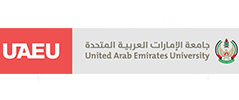
The United Arab Emirates University is a public university of international stature, targeting to be a research-intensive institution. The University has 14,000 students with international students representing 59 countries, 1100 faculty representing 65 nationalities, and 60,000 alumni. Its nine colleges offer 100 degrees at all levels (Bachelor, Masters, and Doctorate) in all major disciplines. The University has international institutional accreditation and international professional accreditors accredit forty of its academic programs. UAEU is a mature university with significant accomplishments and a clear trajectory for continuous improvement with a goal to be recognized internationally as one of the world’s best universities.

Indian Institute of Technology Bombay, the second IIT to be set up in 1958, is recognised worldwide as a leader in the field of engineering education and research. It is reputed for the quality of its faculty and the outstanding calibre of students graduating from its undergraduate and postgraduate programmes. The institute has a total of 15 academic departments, 16 centres, one school and four Interdisciplinary programmes. Over the last five decades, more than 50,000 engineers and scientists have graduated from the institute. It is served by more than 630 faculty members considered not only amongst the best within the country, but are also highly recognised in the world for achievements in the field of education and research. The Institute is recognized as one of the top centres of academic excellence in the country. Over the years, there has been dynamic progress at IIT Bombay in both academic and research activities, including a parallel improvement in facilities and infrastructure to keep it on par with the best institutions in the world.

The oldest university in Sri Lanka with academic excellence in all areas of study keeps to its motto “Wisdom Enlightens”. The University of Colombo has seven faculties with 43 academic departments, a campus, a school, and seven institutes. The University of Colombo with a proud history of over 115 years continues in its endeavour to meet the challenge of maintaining its position as the “Metropolitan University, Modern and International in Outlook and Character.” Student life is enhanced by a plethora of extra-curricular activities. The University of Colombo has a multi-ethnic student and staff population, fostering social harmony, and unity. The University has been placed within the top 1000 Universities in the World by the Times Higher Education World University Rankings 2016-2017.The Times Higher Education World University Rankings 2016-2017 list the 980 top universities in the world, making it as the biggest international league table to date. It is the only global university performance table to judge world-class universities across all of their core missions – teaching, research, knowledge transfer and international outlook. The top universities rankings use 13 carefully calibrated performance indicators to provide the most comprehensive and balanced comparisons available, which are trusted by students, academics, university leaders, industry and governments. The calculation of the rankings for 2016-2017 has been subjected to independent audit by professional services firm PricewaterhouseCoopers (PwC). On 30th November 2016, the University of Colombo was ranked among the top 300 in the prestigious Times Higher Education BRICS & Emerging Economics Rankings 2017. The inclusion of the University of Colombo in the BRICS & Emerging Economies ranking is a significant achievement, as it indicates the University’s ranking as one of the top 300 institutions in the 50 countries included in the analysis. The ranking uses the same 13 rigorous performance indicators as the World University Rankings, examining each university’s strengths against all of its core missions – teaching, research, knowledge transfer and international outlook, with the methodology having been carefully recalibrated to better reflect the characteristics and development priorities of universities in developing economies. Being a University in one such developing country, achieving this ranking among renowned institutions worldwide is indeed a commendable feat.
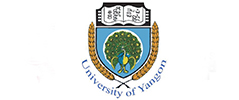
The University of Yangon was established on 1 December 1920. It was well known for national independence movement and its famous alumni are General Aung San and UN Secretary-General U Thant. It is privileged to be one of the oldest national universities in Myanmar. It was one of the most renowned universities in Southeast Asia during 1940s and 1950s. It had been transformed to Rangoon University of Arts and Science (RASU) on 1 November 1964. It was renamed as the University of Yangon on 30 November 1980 to conduct more advanced research. It is now composed of eight science departments and 12 arts departments. Each department is headed by Professor/Head. Currently, the University of Yangon is headed by Rector Dr. Pho Kaung, together with Pro Rector Dr. Omar Kyaw and Pro Rector Dr. Aung Kyaw. The University is now offering bachelor, master, Ph.D and post-graduate diploma degrees. A total of 8056 undergraduate and post-graduate students are attending the classes during the 2016-2017 AY.

For over a century, Chulalongkorn University is committed to be at the forefront of higher education, delivering quality education and professionalism.
As Thailand’s first institution of higher learning, founded in March 1917, Chulalongkorn University has dedicated itself as the center for academic learning and professional excellence. The university’s mission and commitment to public service uphold the visions of the university’s founder, King Rama VI, who established Chulalongkorn University as a tribute to his father, King Rama V.
Whether through the pursuit and development of knowledge, or the application and dissemination of learned concepts, Chulalongkorn University works to empower students with professional know-how and research skills, as well as preserve the arts, culture, and values. Added to the academic learning is the university’s commitment to instill in Chula graduates a sense of morality, social responsibility, and service to society.
Chulalongkorn University has enthusiastic, respectable, high-profile teaching staff and specialists to educate the students. As of 2024, the university comprises 42 faculties, schools, colleges, and institutes, offering 448 academic programs. It employs 3,009 academic staff and 4,766 non-academic staff. Currently, there are 41,477 students including 2,229 international students composed of 73 nationalities, with 29,834 undergraduate and 10,284 postgraduate students.
For further details:
“A Quick Tour of Chulalongkorn University”
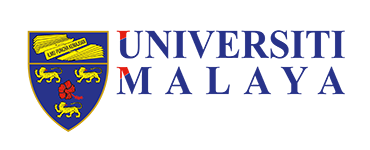
The University of Malaya is a leading research university in Kuala Lumpur, the capital city of Malaysia. Established on 8 October 1949 through the merging of King Edward VII College of Medicine (1905) and Raffles College (1928), the University of Malaya has since played a pivotal role in the human capital development of the country. Today, University of Malaya comprises 2 academies, 12 faculties, 3 institutes, 3 academic centres, more than 50 research centres, and 6 research clusters. The University’s strength lies in the creativity, talent and dynamism of its people. Currently, it has a student enrollment of 24,000, with 3,000 international students from 85 countries, and a total of 2,300 local and international academic staff. The University of Malaya remains at the forefront of scientific and medical discoveries, as is evidenced by the numerous awards, both locally and internationally. With more than 600 partner institutions from around the world, this entails a strong international network and collaborative partnership for research as well as student and staff mobility.

A leading global university centred in Asia, the National University of Singapore (NUS) was founded in 1905 as a modest medical college with 23 students. Today, Singapore’s flagship university spans three campuses in Kent Ridge, Bukit Timah and Outram, and offers a distinctively Asian and global experience that is grounded in maximising the potential of students and their future-readiness, and broad-based research excellence that enables beneficial translation. NUS aims to pioneer new models of education, and continues to maintain rigour and breadth of its academic programmes, innovative entrepreneurship education, and experiential learning.
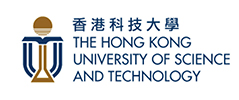
Founded in 1991, the Hong Kong University of Science and Technology (HKUST) is an international research university with strong ties to global thought leaders, whilst having wide-ranging connections with Mainland China. It promotes interdisciplinary studies, dedicated to educating well-rounded students to acquire a strong entrepreneurial spirit and innovative thinking – the necessary foundation and skills for the changing world. The University is housed in a hillside and waterfront complex overlooking the Clear Water Bay peninsula, less than 30 minutes' driving time from Central Hong Kong.
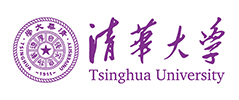
Tsinghua University is a comprehensive research university with 21 schools, 59 departments, and over fifty thousand students from 133 countries. Drawing on a rich local tradition of academic excellence, it is a pacesetter for innovation in China. Today, Tsinghua University is among the most selective universities in the world, a trusted global partner for thousands of researchers and academics, a first port of call for world business and political leaders, and an invaluable bridge for international students seeking a deeper understanding of China.
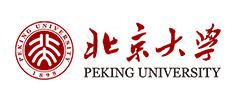
Peking University is ranked one of the top research universities in the world. Since its establishment in 1898, Peking University has played an integral role in the development of the Chinese nation and in the development of democracy and scientific understanding in China. The University is alma mater to many exceptional intellectuals who went on to become transformative forces firmly committed to the advancement of knowledge and betterment of society. Over time, the University’s core values have been defined by the fin traditions of “patriotism, progress, democracy and science, “and governed by the academic standards of “diligence, equality, truth seeking and innovation”. Peking University is not only world renowned for its impressive campus, most notably the Weiming Lake and the Boya Pagoda, but also increasingly for its outstanding academics, vibrant student community and its all-embracing campus culture. The University, standing the test of time, continues to maintain and expand its fine traditions and strengths. It has become a research university excelling in the fields of humanities, social sciences, natural sciences, engineering, applied sciences, and medical sciences. It endeavors to pursue truth, nurture minds, advance scholarship, foster academic ventures and ultimately benefit mankind. All pieces are in place for Peking University to become a world-class university. Amongst other key players, students undoubtedly play the most important role. Our beautiful campus is not only open to Chinese students, but also to the rest of the world.
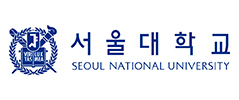
Seoul National University (SNU) is the flagship university of Korea and a world-class research institution in Korea. Seoul National University traces its roots back to its foundation in 1946 as the first modern higher educational institution, founded soon after the liberation from the Japanese colonial rule. As the first national university in Korea, SNU has worked to educate leaders in every sector of society, who played central roles in the democratization and economic development of Korea. The SNU faculty and students strugged to continue their studies even in the midst of the Korean War in 1950, when the campus temporarily relocated to Busan to protect the institution from Communist attacks. With an academic culture and spirit that emphasized the importance of education, SNU attracted and retained the most brilliant minds of the nation. SNU promoted top quality teaching and advanced research practices, which inspired its students and graduates to drive the major advances in the scientific and economic development of Korea. Their achievements and success have borne fruit in the semiconductor industry and information technology, to name just a few. From the 1960s to the 1980s, the SNU community was the first to initiate Korea’s democratization. The SNU community actively participated in urging for political movements and congregations, such as the April Revolution in 1960 and the June Struggle in 1987. Since then, SNU now has grown to be Korea’s biggest education institution with 16 Colleges and 10 Graduate Schools. SNU offers more than 100 academic programs. It has about 3,000 full-time faculty and 30,000 enrolled students. SNU consists of four campuses: the main campus in Gwanak, located in the south western part of Seoul, the medical campus in Yeongeon, located in northern-central Seoul close to the old city center, a green-bio campus in PyeongChang, located in Gangwon province, and a campus for Convergence Studies in Suwon, in Gyeonggi province.

The University of Tokyo was established in 1877 as the first national university in Japan. As a leading research university, UTokyo offers courses in essentially all academic disciplines at both undergraduate and graduate levels and conducts research across the full spectrum of academic activity. The University aims to provide its students with a rich and varied academic environment that ensures opportunities for both intellectual development and the acquisition of professional knowledge and skills.
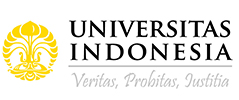
Established in 1849, Universitas Indonesia is a modern, comprehensive, open-minded, multi-culture, and humanism campus that covers wide array of scientific disciplines. With 14 academic faculties, two graduate schools and one vocational program, UI is distinctive among research universities in its commitment to the academic invention and research activities through various scientific programs. UI has produced more than 400,000 alumni and continues its important role both nationally and internationally. Furthermore, it is our commitment to produce high quality education system, global standard research activities and maintaining high standard of international academic research publications as well as addressing the need of the world community.

Since its inception in 1977, Qatar University (QU) continues to serve as Qatar's primary institution of higher education. It has become today a beacon of academic and research excellence in the region.
QU is committed to providing high-quality education in areas of national priority. Underpinning this commitment is the goal to align its colleges, programs, and courses with established international standards and best practices. As a result, QU has been successful in its accreditation initiatives, earning the endorsement of numerous leading international accrediting bodies.